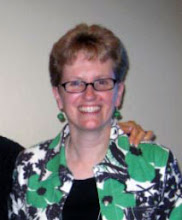
This lovely picture is the view from my favorite seat on the beach at Pineridge Resort in Parham, Ontario. The water and across the water a rock cliff and hill of green trees--lovely!
I love to camp, I live in a family that loves to camp and sometimes we go on a vacation where the only thing we will do is camp and the only people we will see, for days at a time, are other campers. In fact, these times make up some of my family's most cherished memories...
When I tell people that we go camping no one tells us we shouldn't.
At the same time no one makes us go to restaurants just for campers, or a mall just for campers. We are not required to live in a camping neighborhood, have a job just for campers, or attend camper church...
Most people would consider that ridiculous.
Yet when it comes to disability this sort of all-or-nothing thinking is everywhere.
There are folks who believe in all inclusion, all the time. They view any gathering for people with disabilities as segregated and feel every segregated activity steals time and resources from integration. They would never consider telling scrapbookers that they couldn't hang out with other scrapbookers. They would never consider telling Presbyterians they shouldn't spend time with other Presbyterians. But a group of people with Down syndrome is anathema to them.
I think these folks go too far.
At the same time, there are people investing tons of hours and bazillions of dollars trying to create systems for education, jobs, housing, recreation and transportation for people with disabilities that never allow contact with people who do not have disabilities. They create a "special" universe so encompassing that it is possible to go months without any contact with poeple who don't have disabilities except for your staff and your own family. You want exercise? They create a special exercise program. You want worship? They create a special worship service.
I think these folks also go too far. (In fact, there are folks building the same all-encompassing systems for the elderly and I think that is a mistake too.)
I think both of these extremes are very isolating.
To me it seems that all people need BOTH types of experience in their lives: All people should spend a percentage of time with folks who share their interests or characteristics, AND all people should belong to the greater, more diverse community.
It is a question of balance. You could compete in Special Olympics AND run with a local running club. Or live in your own home, work for any local corporation AND belong to a Self-Advocacy organization--or the other way around: work at a sheltered workshop AND be active in your neighborhood association--and your church.
And, in real life, that balance shifts. Prior to the Christmas pageant you might spend every waking moment at church... in the summer you spend less time there and more in your neighborhood at cook-outs...
My friend in Texas saw Dr. George Capone this weekend. From what she says,he spoke about health and adults with Down syndrome. My friend said he reported that depression in people with Down syndrome is a strong predictor of Alzheimer's disease, and he feels that a strong preventor of depression is healthy relationships with the other folks with disabilities. (He often presents at the NDSC conference which is in Sacramento this July--check him out!)
Food for thought...





